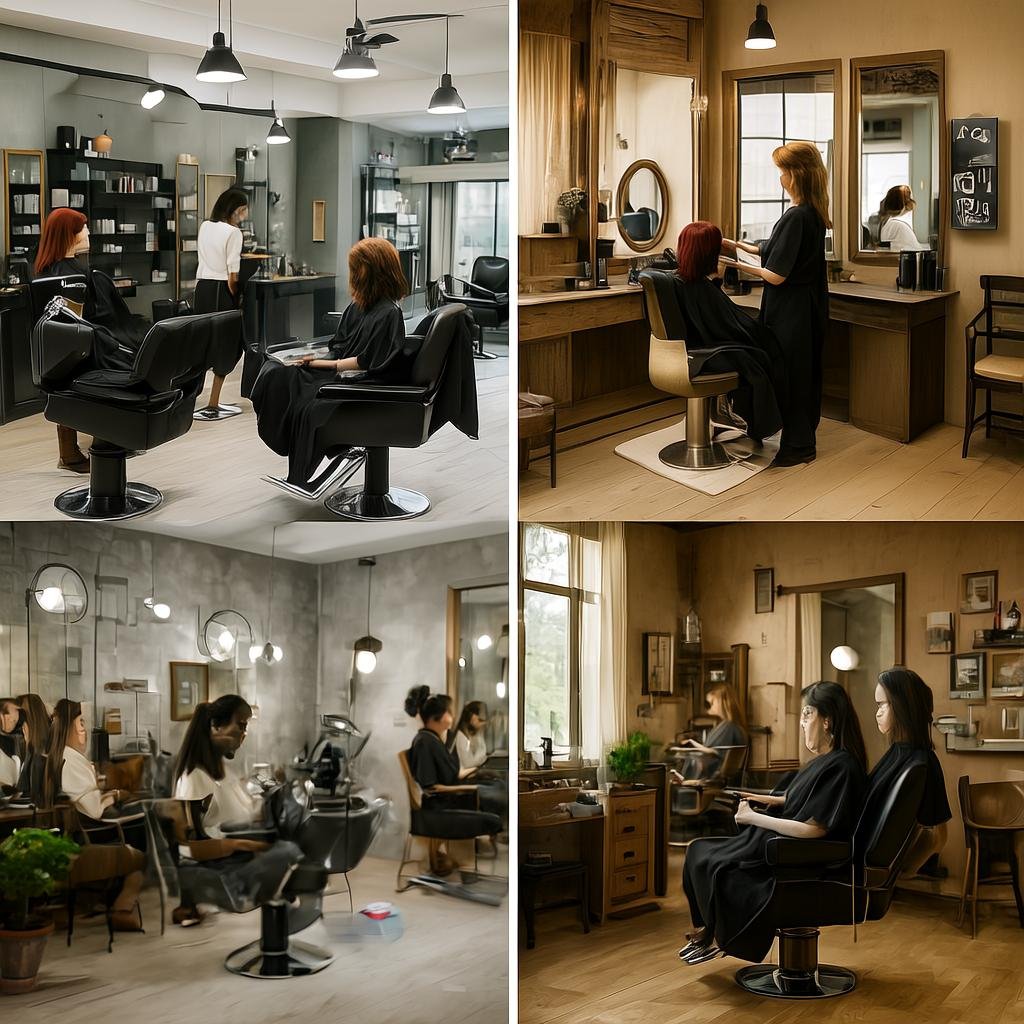Urban vs. Rural: How Location Shapes the American Salon Experience

Content
The salon experience in America varies dramatically depending on where you hang your blow dryer. From the bustling streets of Manhattan to the quiet corners of rural Montana, the differences extend far beyond geography—shaping everything from service offerings and pricing to clientele expectations and business models.
The Urban Advantage: Convenience and Competition
In major metropolitan areas, salons operate in a high-pressure environment where convenience often trumps everything else. City dwellers expect walk-in availability, extended hours to accommodate demanding work schedules, and services delivered with lightning efficiency.
“Time is money in the city,” explains Maria Rodriguez, owner of a bustling salon in downtown Chicago. “My clients don’t have two hours for a cut—they want in and out in 45 minutes, and they’re willing to pay premium prices for that convenience.”
Urban salons typically offer a broader range of services, from traditional cuts and colors to Brazilian blowouts, keratin treatments, and specialized services like scalp micropigmentation or hair extensions. The clientele often includes fashion-forward professionals, influencers, and entrepreneurs who view their appearance as a business investment.
However, urban salons face intense competition. Rodriguez notes that within a five-block radius of her salon, there are over 20 competitors. “We have to constantly innovate, offer the latest techniques, and maintain Instagram-worthy aesthetics just to stay relevant.”
Rural Realities: Community and Craftsmanship
Rural salons operate in a completely different ecosystem. Here, relationships trump rush, and craftsmanship often takes precedence over trendiness. These establishments serve as unofficial community centers where locals gather not just for beauty services, but for social connection.
“In a small town, your salon is where people catch up on local news, share family photos, and support each other through life’s ups and downs,” says Janet Miller, who has owned a salon in rural Iowa for over two decades. “I’ve seen three generations of families grow up in my chair.”
Rural salons typically offer more personalized service and often develop deep expertise in specific areas. Miller, for instance, has become known throughout her county for her precision cuts and natural hair coloring techniques. “I might see the same client every six weeks for years. I know their hair history, their lifestyle, their preferences.”
The pricing structure in rural areas reflects the local economic reality. While a cut in Manhattan might cost $80-150, rural salons often price services 30-50% lower. However, rural salon owners may see fewer clients per day and rely heavily on repeat business and word-of-mouth marketing.
Technology and Trends: Bridging the Gap
Technology adoption varies significantly between urban and rural salons. City establishments are quick to embrace new tools—digital booking systems, social media marketing, and advanced styling equipment. Many urban salons now offer services like LED light therapy, automated shampoo stations, and app-based appointment scheduling.
Rural salons, while perhaps slower to adopt new technologies, are increasingly leveraging social media to showcase their work and attract clients from neighboring towns. However, they often maintain a more traditional approach, focusing on classic techniques and timeless styles rather than chasing viral trends.
Staffing and Training Differences
Urban salons typically employ multiple stylists with diverse specializations, from color artists to texture specialists. The competitive environment drives continuous education, with urban stylists often attending workshops and certification programs regularly.
Rural salons are more likely to be one or two-person operations where the owner serves as both stylist and manager. These professionals often develop versatile skill sets out of necessity, becoming proficient in cuts, colors, perms, and extensions.
The Clientele Factor
Perhaps nowhere is the urban-rural divide more apparent than in client expectations. Urban clients often arrive with Pinterest boards full of inspiration and specific requests, sometimes bringing photos of celebrities or models they want to emulate. They’re typically more demanding about timing and may have less loyalty to individual stylists.
Rural clients tend to value consistency and relationship over dramatic transformation. They’re more likely to seek advice and trust their stylist’s expertise, often staying with the same person for years or even decades.
Economic Considerations
The economic realities of each environment shape business models dramatically. Urban salons must generate higher revenue to offset expensive rent, utilities, and staff salaries. This often means higher prices and a focus on premium services.
Rural salons operate with tighter margins and often serve as family businesses that supplement income through multiple services or products. Many rural salon owners also sell beauty products, offer makeup services for special occasions, or provide mobile services for elderly or disabled clients.
Future Trends and Adaptation
Both urban and rural salons are adapting to changing consumer preferences, including increased demand for natural and sustainable beauty products, gender-inclusive services, and personalized experiences. However, their approaches to adaptation reflect their distinct environments.
Urban salons are incorporating wellness elements—aromatherapy, meditation spaces, and holistic treatments—while rural salons are focusing on community-building initiatives and supporting local causes.
Finding Common Ground
Despite their differences, successful salons in both environments share common elements: skilled professionals who genuinely care about their clients, quality products, clean facilities, and a commitment to ongoing education. The setting may shape the experience, but the fundamental goal remains the same—helping people feel confident and cared for.
Whether you’re seeking a quick city refresh or a small-town relationship, the American salon landscape offers diverse experiences that reflect our country’s varied communities. Each environment brings unique advantages and challenges, creating a rich tapestry of beauty culture that continues to evolve alongside the communities it serves.
As the industry moves forward, both urban and rural salons will need to balance tradition with innovation, maintaining what works for their communities while adapting to meet changing consumer needs. In doing so, they’ll continue to serve not just as places of transformation, but as vital community institutions that bring people together, one appointment at a time.
